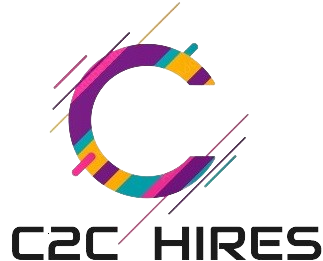
Common Technical Interview Questions for DevOps Engineers
Interviewing for a DevOps position involves a unique set of technical skills and knowledge. As a DevOps engineer, you are expected to bridge the gap between development and operations, ensuring continuous integration and continuous delivery (CI/CD), automation, and effective infrastructure management.
Here are some common technical questions you might encounter, along with guidance on how to approach them.
Questions on CI/CD and Automation
1. What is CI/CD, and why is it important in DevOps?
- Answer: Continuous Integration (CI) is the practice of automatically integrating code changes from multiple contributors into a shared repository several times a day. Continuous Delivery (CD) extends CI by automating the release process, allowing code changes to be automatically prepared for production release. CI/CD is crucial in DevOps as it ensures faster delivery of software, reduces manual errors, and enables quick detection and resolution of integration issues.
2. Can you explain the CI/CD pipeline you have implemented in your previous projects?
- Answer: Describe the tools and technologies used, such as Jenkins, GitLab CI, CircleCI, or Travis CI. Explain the stages of your pipeline (e.g., code commit, build, test, deployment), the types of tests conducted (unit, integration, end-to-end), and how you handled failures and rollbacks.
3. How do you automate deployments in a DevOps environment?
- Answer: Discuss tools like Ansible, Chef, Puppet, or Terraform for infrastructure automation. Mention the use of container orchestration platforms like Kubernetes and Docker Swarm for deploying containerized applications. Explain how you ensure zero-downtime deployments and manage configurations.
Questions on Configuration Management and Infrastructure as Code (IaC)
1. What is Infrastructure as Code (IaC), and what are its benefits?
- Answer: IaC is the practice of managing and provisioning computing infrastructure through machine-readable definition files, rather than physical hardware configuration or interactive configuration tools. Benefits include consistency, repeatability, version control, and easier scaling.
2. How do you use tools like Terraform or CloudFormation?
- Answer: Explain how you define infrastructure configurations using HCL (HashiCorp Configuration Language) for Terraform or JSON/YAML for AWS CloudFormation. Provide examples of provisioning resources like virtual machines, networks, and storage. Discuss how you manage state and handle updates or rollbacks.
3. Describe a scenario where you used Ansible/Chef/Puppet for configuration management.
- Answer: Provide a specific example, detailing the environment, the configurations managed (e.g., software installations, file configurations, service management), and how you wrote and maintained the playbooks/cookbooks/manifests. Highlight any challenges faced and how you overcame them.
Questions on Containers and Orchestration
1. What is Docker, and how does it work?
- Answer: Docker is a platform for developing, shipping, and running applications in containers. Containers package an application and its dependencies together, ensuring consistency across different environments. Docker works by creating lightweight, standalone, executable packages that share the host OS kernel.
2. How do you manage container orchestration with Kubernetes?
- Answer: Describe the architecture of Kubernetes, including nodes, pods, deployments, and services. Explain how you define and deploy applications using YAML configuration files, manage scaling with Horizontal Pod Autoscalers, and handle updates with rolling deployments. Mention any use of Helm for package management and custom resource definitions (CRDs).
3. Can you explain a challenging issue you encountered with containers or Kubernetes and how you resolved it?
- Answer: Provide a specific example, such as a network issue, resource contention, or a deployment failure. Detail the troubleshooting steps, tools used (e.g., kubectl, logs, monitoring tools), and the solution implemented.
Questions on Monitoring and Logging
1. How do you monitor applications and infrastructure in a DevOps environment?
- Answer: Discuss tools like Prometheus, Grafana, Nagios, or Datadog. Explain how you set up monitoring for metrics (e.g., CPU usage, memory, latency), configure alerts, and create dashboards for visualization. Mention any use of distributed tracing tools like Jaeger or Zipkin.
2. What is the ELK stack, and how do you use it for logging?
- Answer: The ELK stack consists of Elasticsearch, Logstash, and Kibana. Elasticsearch is a search and analytics engine, Logstash is a server-side data processing pipeline, and Kibana is a data visualization tool. Explain how you set up log ingestion with Logstash or Beats, index logs in Elasticsearch, and create visualizations and alerts in Kibana.
3. Describe a situation where you had to troubleshoot a performance issue in production.
- Answer: Provide details about the issue, such as slow response times or high error rates. Explain how you used monitoring and logging tools to identify the root cause (e.g., resource bottlenecks, memory leaks, network issues) and the steps taken to resolve it (e.g., optimizing code, scaling resources, adjusting configurations).
Questions on Security and Compliance
1. How do you ensure the security of your CI/CD pipeline?
- Answer: Discuss practices such as code scanning for vulnerabilities, using signed commits, securing credentials and secrets with tools like HashiCorp Vault or AWS Secrets Manager, and implementing role-based access control (RBAC). Mention the importance of keeping dependencies and CI/CD tools up to date.
2. What are some common security practices for containerized applications?
- Answer: Explain the use of container image scanning tools (e.g., Clair, Aqua), running containers with least privilege, using network policies for isolation, and enabling Kubernetes security features like Pod Security Policies and Role-Based Access Control (RBAC).
3. Can you describe a compliance requirement you had to meet and how you ensured adherence?
- Answer: Provide an example such as GDPR, HIPAA, or PCI-DSS. Discuss how you implemented required security controls, conducted regular audits, used automated compliance checks, and documented processes to ensure adherence.
Conclusion
Preparing for a DevOps interview involves understanding a broad range of topics, from CI/CD and automation to infrastructure management, containerization, monitoring, and security. By familiarizing yourself with these common technical questions and formulating thoughtful responses, you can demonstrate your expertise and problem-solving abilities effectively. Good luck with your interview preparation!


